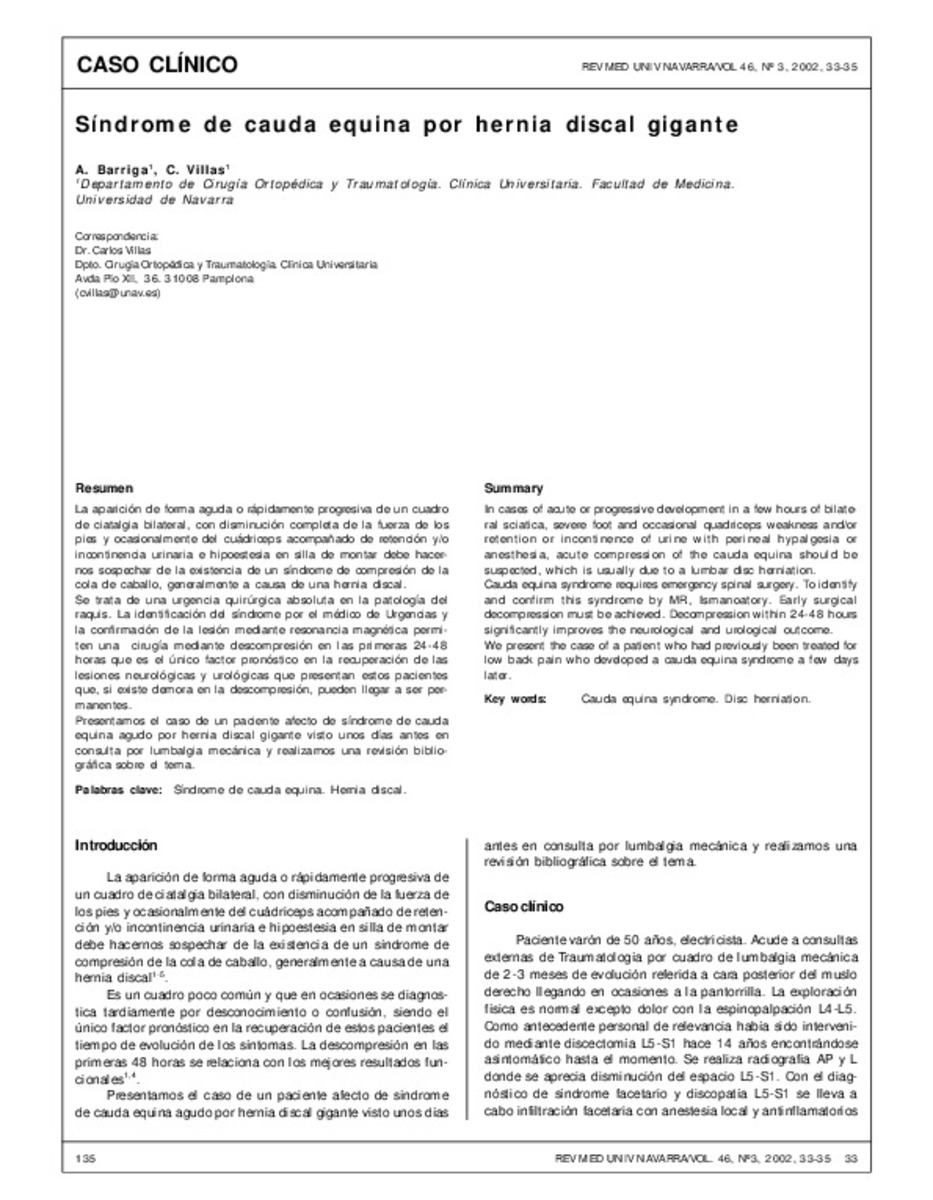Full metadata record
| DC Field | Value | Language |
|---|---|---|
| dc.creator | Barriga, A. (Andrés) | - |
| dc.creator | Villas-Tome, C. (Carlos) | - |
| dc.date.accessioned | 2014-03-11T12:24:09Z | - |
| dc.date.available | 2014-03-11T12:24:09Z | - |
| dc.date.issued | 2002 | - |
| dc.identifier.citation | Barriga A, Villas C.Síndrome de cauda equina por hernia discal gigante. Rev Med Univ Navarra. 2002 Jul-Sep;46(3):33-5. | es_ES |
| dc.identifier.issn | 0556-6177 | - |
| dc.identifier.uri | https://hdl.handle.net/10171/35465 | - |
| dc.description.abstract | In cases of acute or progressive development in a few hours of bilateral sciatica, severe foot and occasional quadriceps weakness and/or retention or incontinence of urine with perineal hypalgesia or anesthesia, acute compression of the cauda equina should be suspected, which is usually due to a lumbar disc herniation. Cauda equina syndrome requires emergency spinal surgery. To identify and confirm this syndrome by MR, Ismanoatory. Early surgical decompression must be achieved. Decompression within 24-48 hours significantly improves the neurological and urological outcome. We present the case of a patient who had previously been treated for low back pain who developed a cauda equina syndrome a few days later | es_ES |
| dc.language.iso | spa | es_ES |
| dc.publisher | Ediciones Universidad de Navarra | es_ES |
| dc.rights | info:eu-repo/semantics/openAccess | es_ES |
| dc.rights | info:eu-repo/semantics/openAccess | es_ES |
| dc.subject | Hernia discal | es_ES |
| dc.subject | Síndrome cauda equina | es_ES |
| dc.title | Síndrome de cauda equina por hernia discal gigante | es_ES |
| dc.type | info:eu-repo/semantics/article | es_ES |
Files in This Item:
Statistics and impact
Items in Dadun are protected by copyright, with all rights reserved, unless otherwise indicated.






